Heartland to Present Climate Denial Awards


Is there anything about the Koch Brothers’ Heartland Institute that isn’t disingenuous?
This week the group announced its 2015 Climate Change Award winners, though, if it were being truthful it should have called them the Climate Change Denial Awards. That would make it more clear what this is all about. But Heartland is not really interested in clarity. Publicity, confusion and doubt are its main stock in trade, serving its masters by perpetuating the idea that climate change is just some hypothetical idea cooked up for political reasons by people they don’t like very much. Pay no attention to those droughts and floods and melting glaciers (and that man behind the curtain).
The awards will be presented at the so-called Tenth International Conference on Climate Change taking place this week in Washington, D.C.
Since the pool of potential candidates is so small and inbred, it’s not surprising that the winners are familiar names, most pulled directly from Heartland’s cadre of doubt-mongers. Some are on the payroll; many have predominantly distinguished themselves by their ability to embarrass those associated with them, as much as anything else. Most were asked to leave their positions in academia or government, if they ever had one.
Starting from the top is Oklahoma Sen. James Inhofe, of snowball-throwing fame. Inhofe’s assertion that since snowballs exist global warming doesn’t is certainly worthy of some kind of award, and this one is probably as good as any. Congratulations, senator. May you display it proudly on your wall.
William Happer, who chairs the Exxon-funded George C. Marshall Institute, worries that we won’t have enough carbon dioxide. He’s written only one scientific paper about climate change, but has many articles in the popular press. As an example, “The Truth About Greenhouse Gases” is mostly rhetoric and very little science. For all its length, bluster and internal contradiction, it never explains what the greenhouse effect is, or for that matter even acknowledge its existence. He says that CO2 will only be a problem at 5,000 parts per million, at which point it becomes immediately deadly (see Lake Nyos), even though he later says that 780 ppm, a number he apparently pulls out of thin air, will cause global warming.
David Legates is a colleague and cohort of Wei Hock “Willie” Soon. The two co-authored a paper on polar bears that was funded by Koch Industries. Soon’s credibility took a serious hit when it was revealed that he had accepted millions in support from companies that put him in a conflict-of-interest position with regard to his research. Legates was asked to step down as the Delaware State Climatologist in 2011.
Both Happer and Legates signed the open letter to Pope Francis, asking him to reconsider in position on climate change. They probably weren’t aware that the Pope has a chemistry degree and is fully capable of evaluating the evidence for himself.
Legates told the Senate Environment and Public Works Committee: “My overall conclusion is that droughts in the United States are more frequent and more intense during colder periods. Thus, the historical record does not warrant a claim that global warming is likely to negatively impact agricultural activities.” This is also disingenuous, since anyone even remotely close to the science knows that the broader issue of climate disruption and not just simple warming certainly does account for droughts.
Anthony Watts is a climate skeptic and former TV meteorologist in Indiana. He is best known as the founder and editor of the blog Watts Up With That. He attended Purdue University as a student of electrical engineering and meteorology but never graduated. Documents obtained by DeSmogBlog showed that Heartland Institute was involved in obtaining funding for Watts, to the tune of $90,000. The book "Climate Change: The Facts" is a denier’s manifesto, in which Watts was one of 23 co-authors. It is currently in the top 100 books on Amazon in terms of sales, well above most actual science.
Robert M. Carter, is a former geology and paleontology researcher at Cook University in Australia. That relationship was terminated by the university in 2013. Carter is an active advocate of climate denial, oft-quoted in the media and used by numerous denial groups to bolster their positions. Carter received a $1,600 monthly retainer for some indeterminate period of time from the Heartland Institute for his efforts at stoking the flames of doubt.
I hesitated to write about this at all, since every drop of media coverage that these people get is a win for them; it adds to the illusion that there is still a debate among knowledgeable individuals as to the basic facts regarding climate change. There isn’t. However, leaving these antics unchallenged can also lead the uninformed to believe them. The sad truth is that it’s far too easy to be fooled by someone speaking with confidence about a complicated subject that you don’t know that much about. How then does one decide who to trust? One idea that works pretty well — follow the money.
Image credit: Andy Silver: Flickr Creative Commons
Multinational Businesses and the Plight of the Rohingya


Earlier this week, the BBC asked, “Will anyone help the Rohingya people?” For the last 40 years, the answer has been a resounding, “No.”
Following the entrance of hundreds of multinational businesses into the Burmese market, hoping to take advantage of a Burma that is now “open for business,” one might be forgiven for hoping that the Rohingya of the New Burma (aka Myanmar) would face a different fate. Yet, even in a more open and democratic Burma, the Rohingya continue to suffer, and there isn't a single actor -- governmental, corporate or otherwise -- willing to take responsibility.
The plight of the Rohingya
The Rohingya, an ethnic Muslim minority, has been one of the world’s most persecuted refugee groups since the Burmese military drove more than 250,000 Rohingya into Bangladesh in 1978. Many of those originally expelled from Burma were forcibly returned by Bangladesh; those remaining in Burma were denied citizenship through the 1982 “Citizenship Law” that remains on the books. In 1991, the Burmese military reprised its 1978 expulsion of Rohingya, and Bangladesh returned the favor four years later, again forcibly returning many Rohingya refugees to Burma. Since 1995, the Rohingya have lived mostly along the Bangladeshi border where their freedoms of movement, work, religion and access to basic social services have been severely curtailed.
Approximately 30,000 “officially recognized” Rohingya refugees currently live in United Nations High Commission for Refugees (UNHCR)-run camps in Bangladesh. These refugees are entitled to certain protections from the UNHCR and the Bangladeshi government. There are another estimated 250,000 to 300,000 undocumented Rohingya in Bangladesh who receive no such protections.
In 2005, boats began transporting Rohingya refugees and would-be migrant workers to Malaysia, often docking in Thailand to leverage the human-trafficking routes running from there into Malaysia. In 2012, Burmese authorities and Arakanese Buddhists carried out a campaign of ethnic cleansing against Rohingya Muslims, causing 140,000 Rohingya to flee their homes. The UNHCR estimates that there are currently 240,000 internally displaced people (IDPs) in Burma, many of whom are Rohingya and other Muslims. According to Burmese human rights workers, roughly 100,000 Rohingya have fled Burma on boats, which amounts to roughly 10 percent of the Rohingya population.
Last month, dozens of human-trafficking camps were discovered in both Thailand and Malaysia. Near the camps, almost 150 graves have been uncovered and are still being exhumed. Recently, the international media reported claims of Rohingya refugee women who were taken hostage at the camps and gang raped by their captors.
The discovery of the trafficking camps led to a crackdown on the entrance of migrants by Thai authorities, which in turn resulted in smugglers abandoning boats full of migrants in the Bay of Bengal and the Andaman Sea. In mid-May, it was estimated that up to 8,000 Bangladeshi migrants and Rohingya refugees were stranded at sea close to Malaysia and Indonesia. The BBC reported that at least 10 people had died on one abandoned ship denied entry by Thailand.
The end result is a people without a state and nowhere to go.
The New Burma
Historically a military dictatorship, Burma began to change its ways in 2010, when the military backed a new civilian government and released Nobel laureate and opposition leader, Aung San Suu Kyi, from house arrest after keeping her locked up for 15 of the last 21 years. In late 2011, Suu Kyi was allowed to re-register her National League for Democracy party, which would go on to win nearly all of the available seats in a 2012 “by-election” that was generally regarded as free and fair. (The military continued to hold the vast majority of all parliamentary seats.) As a result of the 2012 election, the U.S. and EU eased -- and ultimately dropped -- their sanctions against the country.
In 2013, the New York Times applauded Burma’s transition from a military junta to a country with “substantially more open foreign investment laws” and low costs of labor likely to lure foreign investors. The Times’ tone was generally positive, but it warned potential investors to “make sure that they are not merely enabling a transition from a military dictatorship to military-run crony capitalism.” Meanwhile, human rights groups questioned the timing of the EU’s decision to lift all sanctions against Burma in light of the evidence of government-backed crimes against humanity against Rohingya Muslims.
Foreign investment
In late 2014, Suu Kyi warned that reforms in the country had stalled; yet, Burma saw more than $8 billion in foreign direct investment in FY 2014-15 -- $3 billion more than anticipated and double the previous year’s total (not to mention 25 times the $329.6 million received in 2009-10). The head of Burma’s state-run Myanmar Investment Commission credited the “opening-up of its telecoms sector and the courting of manufacturers and energy firms.”
In response, the Business & Human Rights Resource Center (BHRRC), arguably the leading NGO devoted exclusively to the issue of business and human rights, launched a project to track foreign investment in Burma. (The U.S. government also requires any U.S. person who invests $500,000 or more in Burma, or invests in Burma’s oil and gas sector, to complete certain reporting requirements.)
As part of its project, BHRRC asked over 115 companies thought to have have a footprint in Burma to provide information on the nature of their investments; their policies and procedures to prevent contributing to human rights abuses; and steps they are taking to develop such policies and procedures. As of February 2015, 66 companies had submitted a response to BHRRC’s questionnaire, or indicated they are preparing one (a 56 percent response rate).
According to BHRRC’s database, companies currently invested in Burma include such international giants as Adidas, BMW, Chevron, Cisco, Coca-Cola, Ford, Gap, General Electric, Microsoft, Mitsubishi, PepisCo, Samsung, Shell and Unilever. Those that have not responded include Boeing, Colgate-Palmolive, KFC, Nissan, Procter & Gamble and Suzuki.
The size and scope of these companies’ investments in Burma vary widely. Coke, for instance, has plans to invest $200 million in the country over five years; Gap, on the other hand, does not yet “own, lease or operate any offices or facilities” in Burma, but does source finished outerwear from factories in Yangon. Regardless of the current state of their investments, however, major multinational businesses now make up a significant cohort in Burma and, consequently, wield an influence there. As the leading consulting firm, McKinsey & Co., noted in a 2013 report, foreign investment in Burma could “conceivably quadruple the size of [the Burmese] economy, from $45 billion in 2010 to more than $200 billion in 2030—creating upward of ten million nonagricultural jobs in the process.”
Whose responsibility?
Thus far, even Suu Kyi has failed to take a stand against what is happening to the Rohingya, arguably in order to avoid alienating the country’s Buddhist majority in advance of next year’s general election. The response of the international community has been similarly lacking, and the government denies that the Rohingya are even persecuted.
So, what about the multinational companies now exploiting -- or poised to exploit -- an economy that could quadruple in the next 20 years? Do they have a role to play? There may not be any legal requirement compelling foreign companies to abandon the Burmese market, but surely there is some moral obligation to take a public stand against the persecution of the Rohingya.
Burma is, after all, still a market controlled by the government and one subject to rampant corruption. A U.N.-led survey released last year found that “60 percent of the firms surveyed said they had to pay bribes for registration, licenses or permits.” Last year, Transparency International placed the country 156th out of 175 countries on its Corruption Perceptions Index. In other words, some nontrivial portion of foreign investment in Burma lines the pockets of government officials, who are likely to be members of a military responsible for serious and continuing human rights abuses.
That isn’t to say that Coke should abandon its dream of peddling sugary drinks to little Burmese children. But should it not threaten to stop doing so in light of human rights abuses? Should Adidas, BMW, Chevron, Cisco, Coca-Cola, Ford, Gap, General Electric, Microsoft, Mitsubishi, PepisCo, Samsung, Shell, Unilever and the dozens of other international corporate behemoths not stand up and loudly criticize the Burmese government for its persecution of the Rohingya, threatening to once again leave the country if the government does not improve?
Just imagine if they did.
Image credits: 1) Flickr/Steve Gumaer 2) EU/ECHO/Pierre Prakash
Policy Points: How Family-Friendly Work Laws Will Strengthen the Economy


By Zach Bernstein
Close to seven years after the Great Recession, the U.S. economy continues to make some strides back to full health, but progress has been slow and often uneven. That’s especially true for women – though many of these discrepancies, from the pay gap to gaps in the labor force participation rate, have existed for a long time.
We’ve written before about the importance of programs like paid family leave, both for workers and for the economy as a whole. Now, it’s true these issues don’t only affect women – any worker, male or female, could need to take time off to care for a sick family member, and should have access to paid leave – but the data indicates that women are far more likely than men to take time off from work to care for a child or family member.
It’s a self-evident point: If women, who made up 47 percent of the workforce in 2010, are facing this many problems, our economy is going to continue to leave a lot of gains on the table. Luckily, there are ways to make sure we’re not.
A mission to improve the economy ...
Last month, the American Sustainable Business Council (ASBC) joined with #MissionPossible, a campaign to support an economic agenda that helps women and families succeed. This is a fairly broad program, encompassing a range of issues from paid family leave and earned sick days to equal pay and affordable childcare. All of them are designed to make life easier for working women.
The event last month featured several advocacy groups, as well as members of Congress, including House Minority Leader Nancy Pelosi (D-Calif.). And at a time when passing any legislation can seem like a massive struggle, this endorsement was good news.
Legislation for Family Medical Leave Insurance and paid sick days has been re-introduced in Congress, and there continues to be more movement on the state level. Meanwhile, one of the first pieces of legislation passed under President Barack Obama was the Lilly Ledbetter Fair Pay Act, which made it easier for women to seek legal remedies if they were the victims of wage discrimination. Progress continues to be made, but there’s still work to be done.
... Should you choose to accept it
Of course, the business case for issues like these is strong. Any employee benefit, whether it's paid time off to deal with an illness or following childbirth, equal pay, or childcare, ultimately results in the same thing: happier, more productive employees.
Think of it like this: There’s probably been a time when you came in to work feeling a little stressed about something else going on in your life. Were you as productive as you normally are? The answer is: probably not. And if you’re not as productive, your company isn’t going to do as well.
Then there’s the other side: Employees who find a better offer elsewhere, at a company that offers better pay or benefits, usually decide to take it. Even if their old company doesn’t have a problem finding someone to replace them, the time it takes to go through the hiring process and train a replacement is also bad for the bottom line, especially if other employees have to pick up the slack in the meantime -- maybe making them feel more stressed, and also less productive.
As ASBC’s campaigns manager, Greta Twombly, noted: "Businesses big and small are recognizing that a valued employee is a more efficient and productive employee. They’re already reaping the benefits that come along with that, and when legislation like the FAMILY Act and Healthy Families Act passes, those benefits will extend to the entire workforce, which in turn will boost the entire economy."
And that, ultimately, is the point. A number of businesses have stated their support for this kind of legislation, because they know it’s a benefit for them. One of them stated that support clearly during the meeting with Pelosi last month.
“[Eileen Fisher] is committed to our employees, through a strong family and medical leave policy as well as other key benefits that put our employees first,” said Eileen Fisher, the fashion label’s founder and chief creative officer. “As a result of these efforts, we have greatly prospered. We know this important legislation will help employees and businesses across the country thrive.”
For that to happen we need Congress to step up and pass this legislation, bringing us into line with every other developed country in the world when it comes to paid maternity leave or sick days.
That’s the best argument for this legislation, and why it’s so important for businesses and business groups to get involved. It’s not just an issue of taking care of women or families, as laudable as that is – it’s about making America stronger, and more competitive, for everyone.
Image credit: Flickr/Carissa Rogers
Zach Bernstein is Research Manager for the American Sustainable Business Council.
Policy Points is produced by the American Sustainable Business Council. The editor is Richard Eidlin, Vice President – Public Policy and Business Engagement.
Trust, Brand Value and Fossil Fuel Companies
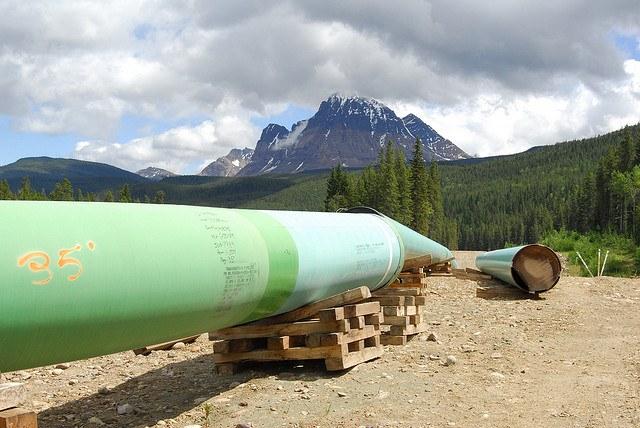

By Marc de Sousa Shields
Anyone who watched the Boston Red Sox get blown out by the Los Angeles Angels last week may have noticed a billboard behind home plate that read something to the effect of "because you trusted Gulf Oil at the pump … You can trust Gulf (Electricity) in your home."
Trust – it’s a big word in the world of branding, one which becomes all the more large and loaded when used by a fossil fuel company (FFC).
(Before reading on, you should know I have nothing against Gulf. I don’t particularly like fossil fuels, but they are not going away tomorrow, so we ought to judge FFCs by their transparency and plans to transition to environmentally sane energy and not just our visceral sentiments about them).
From a brand perspective, one really has to wonder about the billboard and the intention of Gulf.
Given even the most non-sustainability literate amongst us would likely baulk at using the “T” word in any sentence referring to a FFC, it is quite incredible Gulf would choose to use it at all.
Indeed, when asked by a 2013 Harris poll “which industries are generally honest and trustworthy so that you normally believe a statement by a company in that industry,” just 4 percent of consumers found oil and gas companies to be trustworthy, beating out only the tobacco industry … and even then by a mere 1 percent.
The brand value of FFCs is in shambles; we all know this. So, simply telling us we trusted them before, which hasn’t been true for well over a decade, isn’t likely to make us do so now.
Is Gulf really that detached from reality? Or does the company have some great trust-generation plan somewhere we don’t know about? A simple search of its website does not illuminate.
Of course, it’s unlikely the trust ad was more than a blip on the company's much larger promotional screen.
Still, it’s intriguing to ponder why any fossil fuel company might think consumers would trust them when even a simple internet search shows multiple, often egregious facts of corruption, environmental fines, duplicitous behavior and just all around poor form that hardly leads a sense of trust.
This is the answer to the smaller question about FFCs and trust. The larger and more important question is: Can any FFC ever retool itself for a sustainable future and rebrand itself as trustworthy?
This is not just a theoretical question, for as the forces of electrical generation decentralization take hold (think: rooftop solar) and alternatively-fueled personal transportation take off -- as they will -- what is to become of massive FFCs? How many will fail to make the big shift just as Kodak did, and how many will succeed like Fuji?
Rebranding a fossil fuel company poses more than just a fascinating challenge. It is important because these firms are large, very influential and have an enormous impact on the economy. A smooth transition to clean energy would be by far the better path to sustainability than a lumpy, crisis filled one.
The future aside, Gulf’s trust ad is swimming against an immense tide of unpopularity, and not incidentally, portents of the battle before the company and all FFCs.
Image credit: Flickr/rblood
Marc de Sousa Shields is Managing Director at ES Global, a corporate sustainability advisory based in Mexico. Marc has worked in over 40 developed and developing countries focusing on corporate sustainability strategy, brand, and returns. He is author of the soon to be released “Sustainable Century by Design or Disaster.”
STEM Students Study Abroad for Social Good
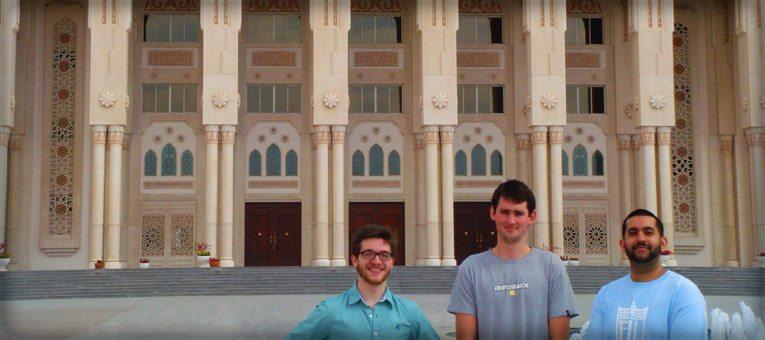

By David F. Fougere
This graduation season, while enjoying the commencement speeches full of inspirational words for students heading out into the world, ready to make it a better place, let’s consider this heartening fact: There’s a good chance they’ll make good on their promises. Forty percent of bachelor's degrees earned by men and 29 percent earned by women are now in science, technology, engineering and math (STEM), according to the National Student Clearinghouse. These are the innovators – the engineers, scientists and researchers – who will solve the world’s problems and lead us into the future.
Hard sciences as curricula for triple-bottom-line career paths? Absolutely.
At its highest level, the STEM philosophy is about improving quality of life and the health of the planet. This is a mantle that’s perfect for Generation Z, a cohort encompassing today’s high school and college students that is increasingly passionate about the needs of the developing world. With STEM degrees in hand, these soon-to-be professionals hold the knowledge and technologies needed to solve real-world problems and improve standards of living -- not just in the United States, but also around the world.
More than 7 billion people around the world rely on STEM to solve rapidly increasing problems related to climate change, contamination, and food and water shortages. Combating these global issues requires the ability to see from multiple perspectives and the skills to bridge cultural divides.
As early as grade school, students are learning about the international nature of STEM efforts, from global warming to sustainability, and about the destinations far beyond U.S. borders that are leading the way. Take renewable energy: Denmark leads in wind power, Iceland in geothermal energy, Germany in sustainable architecture, Japan in solar, Costa Rica in hydroelectric power, Africa in rural water management and irrigation – the list goes on and on.
What it all comes down to is the fact that, to be cutting-edge or even just competitive, STEM works best with an international understanding of research and how to apply technologies and ideas within a cultural framework to make them most effective.
Increasingly, college and high school students are discovering that the best way to gain this critical international understanding while honing their skills in their chosen field is to combine their STEM curriculum with study abroad.
Take a look at a few examples. STEM students today can study conservation and marine biology in the island nation of Bonaire, home to one of the Earth’s most diverse and pristine marine habitats. But make no mistake; this is no beach vacation. Students on a tropical marine ecology and conservation program go on 35 scientific dives as part of their coursework. They collaborate on research projects with the Bonaire National Marine Park and other institutions, then present their findings to the public. Students even submit their findings to the student scientific journal, Physis: Journal of Marine Science. All this while immersing themselves in the local culture and deepening their appreciation for the impact their work can have.
Alternatively, engineering students might opt to spend a semester in the United Arab Emirates (UAE). Home to incredible engineering feats, like the Burj Khalifa (the tallest tower in the world) and Palm Jumeirah (a man-made, palm tree-shaped archipelago), the UAE is the perfect place to learn about engineering, the Arab world and the global economy. There, students refine their Arabic language skills, and witness the daily intersection of traditional values and modern realities firsthand. They also go on excursions that illuminate their understanding of the region, alter their perspective of the world and match experiential learning with coursework.
The bottom line: STEM students with study abroad experience have more than just a résumé advantage or proof of their depth and commitment to the global community. They also carry a new view of intercultural cooperation and innovation that will allow them to make good on the promises in their commencement addresses.
Image credit: CIEE Study Abroad
David F. Fougere is executive vice president of Study Abroad for CIEE: Council on International Educational Exchange, the nation’s oldest and largest study abroad and cultural exchange organization.
Workforce ‘missing piece of reporting jigsaw’ says NAPF


Companies should be including data on their workforces in their corporate reporting in order to give investors greater insight in to their business model, says a new discussion paper from the National Association of Pension Funds (NAPF).
“It seems presently for both companies and investors that there is a blind spot associated with the ‘S’ of ESG,” said Joanne Segars, chief executive of the NAPF.
Despite the familiar corporate mantra of “our people are our greatest asset”, and the widely accepted view that human capital is one of the four pillars of capital which underpin corporate and economic growth (the others being physical, social and intellectual capital), most companies still fail to report on it in any meaningful way, maintains the NAPF.
“Companies often tell us they would report on this if investors asked them to – and too few investors make that request. But on the other hand, investors say they would place greater emphasis on this issue if more meaningful information were available. The NAPF wants to kick start a discussion to resolve this conundrum,” added Segars.
The discussion paper, Where’s the workforce in corporate reporting?, can be accessed here.
For the full story see the July issue of Ethical Performance.
How Dell is Closing the Loop


As our world increasingly revolves around the latest tech gadgets, consider this: Less than 15 percent of electronic products are recycled each year, and the majority of e-waste that is thrown into landfills can be readily reused or recycled for materials recovery, according to the U.S. Environmental Protection Agency. When it comes to the electronics industry, the gap to close the loop is huge. Dell hopes to change that with its design-for-environment-inspired OptiPlex 3030 and closed loop plastic recycling initiative.
One of 2000 computer models to be registered in the EPEAT green rating system, the OptiPlex 3030 All-in-One Dell computer contains at least 10 percent repurposed plastic from recycled electronics and sets a new closed loop supply chain standard for the industry.
Consumer education
The design, which earned Dell the 2014 Design for Recycling Award from the Institute of Scrap Recycling Industries (ISRI), not only helps the company trim its e-waste and reduce carbon emissions by 11 percent compared with virgin plastics, but it is also a ready-made consumer education and communications tool.
“This is really resonating with customers in that they can see the direct value in recycling,” said Scott O’Connell, director of environmental affairs at Dell. “With the closed loop system you can show customers the connection. It’s not just about dropping off items at the curb anymore. When a customer recycles e-waste, it can come back to them in a new product.”
This is a huge win considering that 20 to 50 million metric tons of e-waste are sent to landfills worldwide each year and e-waste remains the fastest growing municipal waste stream in this country, according to the United Nations and the EPA. Consumer engagement is the Rubik’s cube that needs to be solved to close loops and truly build a circular economy.
Recycling partnerships
As part of Dell’s 2020 Legacy of Good Plan, the company’s goal is to recover 2 billion pounds of used electronics by 2020. To increase awareness of electronics recycling, Dell has partnered with various organizations to enable consumers to recycle e-waste for free in 78 countries.
In the United States, Dell has partnered with Goodwill to make it free and convenient for consumers to recycle any type of electronic waste in 2,000 locations across the country. The program also creates jobs and revenue for Goodwill.
Last year, Dell partnered with the United Nations Industrial Development Organization (UNIDO) to develop new e-waste recycling models in developing countries, too. The company’s Asset Resale and Recycling service enables commercial customers in 44 countries to recycle e-waste.
Employee engagement
While Dell has focused on facilitating consumer recycling, the company has also engaged its employees to help build a circular economy. In past years, the company has seen more public sector and government customers looking for sustainable attributes in their products, especially customers in Europe, and has therefore enlisted employees to innovate around sustainability.
“As employees hear more about our closed loop recycling program and the circular economy, they’re prompting us to look across other sectors and see if we can use their waste ... in our packaging,” O’Connell said. “It’s been fun to see what other ideas come out. We’re finding unique opportunities that we wouldn’t have identified naturally.”
Employees have looked into using waste streams from the automotive and aerospace industries for in Dell’s packaging. And later this year, Dell will announce a partnership that might get the industry talking some more about the circular economy. Let’s keep our eyes peeled for that.
Images courtesy of Dell
EPA Study: Fracking Doesn't Contaminate Water
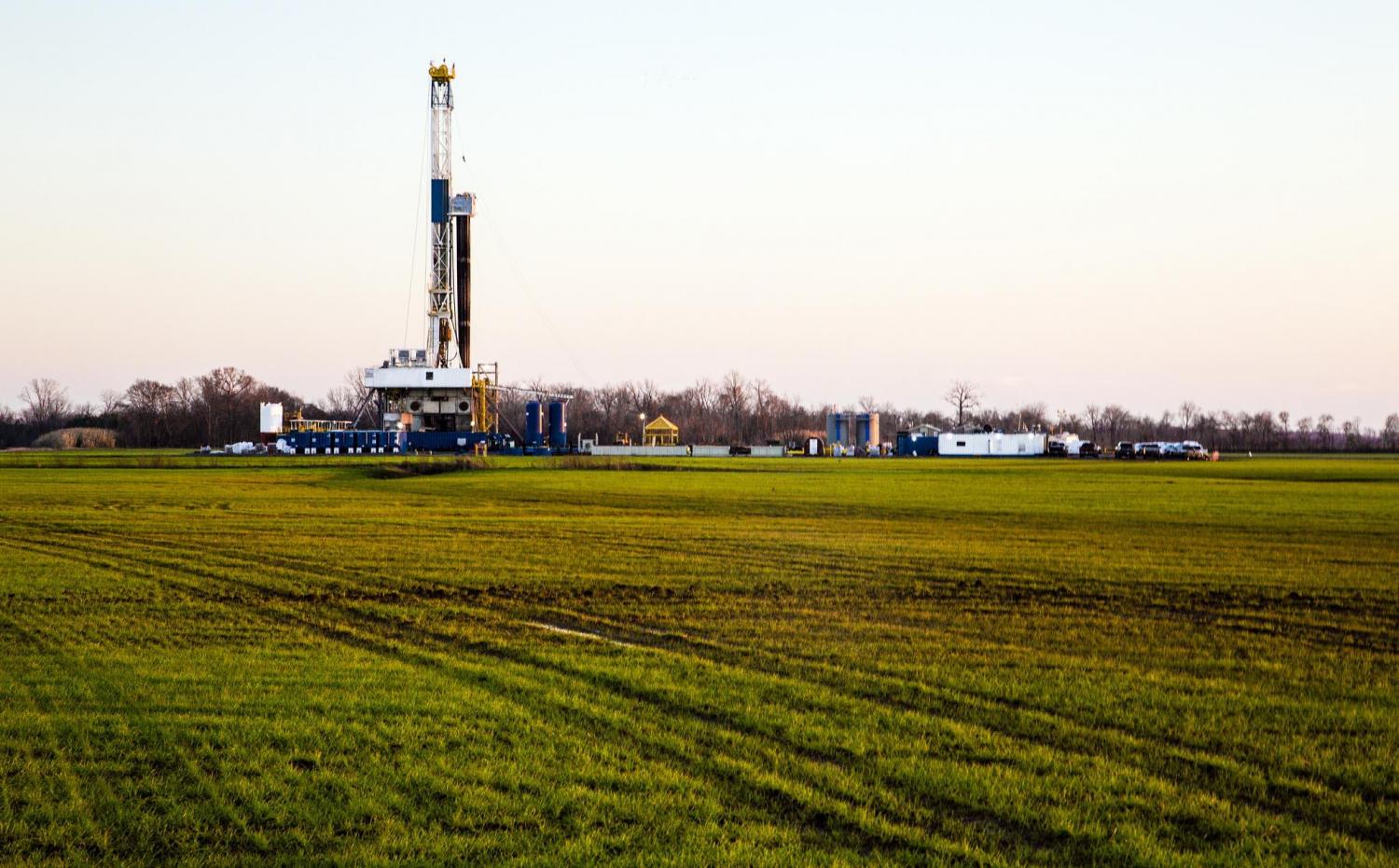

The Environmental Protection Agency recently released a long-anticipated study on hydraulic fracturing, better known as fracking, and found there were no widespread and systematic deficiencies on the country’s drinking resources. The report did, however, unravel evidence that suggests fracking creates several vulnerabilities that could potentially affect drinking water in the U.S.
The study was mostly a compilation of data drawn from different scientific databases -- more than 950 sources in all. The report used published papers, technical reports and data from different interest groups to evaluate the impact of fracking.
The practice was first introduced in the United States in 1949, and the fracking industry quickly boomed into one of the most profitable oil-producing businesses in the country. With more than 2 million oil and gas wells enveloping U.S. land, fracking contributes 43 percent of the oil production and 67 percent of the natural gas production in the nation, according to the U.S. Department of Energy. While the oil and gas wells that sprout up from fracking create a great domestic resource, environmentalists and homeowners near fracking areas have been fighting about its consequences for more than 30 years.
The EPA’s nearly five-year project only analyzed the impact of hydraulic fracturing on the water supply for human consumption, but failed to review the risks of air quality, dangerous gas emissions and mishandling waste. Of the health and environmental impacts listed above, the EPA tackled the most controversial topic in the study.
In 2012, a Texas couple sued oil and gas company Range Resources after exemplifying the mass build-up of methane in their drinking well by placing a lighter under a running faucet and watching the water turn into a bubbly, undrinkable fire. The couple, Steve and Shyla Lipsky, lost the case after Range Resources persistently said the methane came from natural seeps far beneath the bedrock.
According to the EPA, drinking methane-laden water is not viewed as a health hazard. The real concern with fracking lies in whether other chemicals, along with methane, could be creeping into clean-ish water pipes. The report noted that water resources are particularly vulnerable when there’s potential of leaking wells and above-ground wastewater spills.
The Houston Chronicle began an investigative report to see how fracking indirectly affects the workers on these big Texas plants. The paper found that fatal traffic accidents have seen a huge spike recently because of the fatigued workers driving home from the wells after sometimes 24-hour shifts. Last year in Colorado, a pipe ruptured and killed one Halliburton employee and seriously injured two more.
The EPA has consistently said there was no evidence that links fracking to groundwater contamination. In 2011, then-EPA Administrator Lisa Jackson told a congressional panel that fracking didn’t show any signs of dirtying drinking water. Now, four years later, the report illuminates much of the same stance.
Research on water use from fracking proved that the practice doesn’t use that much water relative to the total income states receive. In Pennsylvania, one of the fracking industry's most used states, drilling only consumed 0.20 percent of total water use in the state in 2011. There are certainly economic benefits involved in fracking, but states have to weigh whether those impacts are worth the risk environmentally.
New York state, which shares a border with Pennsylvania, banned fracking because of the health and environmental questions surrounding the issue. In February, 15 towns threatened Democratic Gov. Andrew Cuomo with secession from the state, saying they wanted to join Pennsylvania and capitalize on the resources they’re missing out on.
While the towns itching to secede look at the possibilities of new jobs and more money for the area, the move is far-fetched. New York will look at the recent EPA report and decide whether fracking isn’t as dangerous as previously anticipated or if the report only scratched the surface on health and environmental risks.
Image credit: Flickr/Daniel Foster
Big Brands, Retailers Sold on Volta's Free EV Charging Network
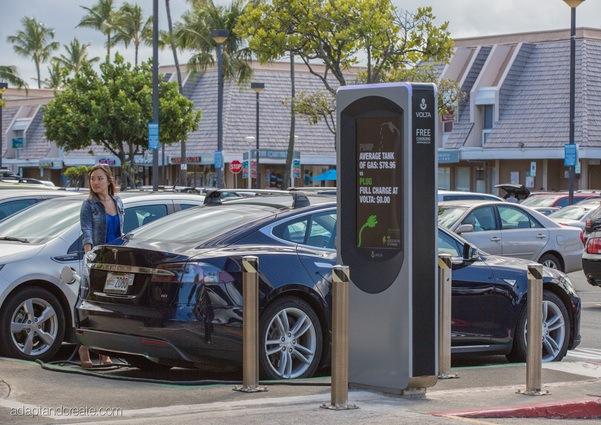

Aiming to “goose” uptake and use of electric vehicles, San Francisco-based Volta Industries on June 10 announced it is building networks of free community-based EV charging stations in five major U.S. cities. Volta also announced the closing of $4.5 million in series A equity venture capital (VC) funding and another $3 million in project financing.
Following a successful “proof of concept” trial in Honolulu, leading brands and retailers such as Whole Foods and Macy's are helping fund the building of free Volta EV charging networks at high-end shopping malls and other high-profile, high-traffic sites in Los Angeles, Phoenix, San Diego and San Francisco. Commercial property owners such as General Growth, DDR and Regency like Volta's EV charging stations and community-based free services business model as well. So do venture capital investors and project finance providers: Three Bridges Ventures led Volta's $4.5 million series A equity funding round, while SQN is providing $3 million in project financing.
In building an income stream and the organization, Volta is using a business development model proven effective by Google and other leading Internet companies. It is convincing corporations behind leading brand-name consumer products to fund free socially and environmentally beneficial community services in return for high-profile advertising space, social and “green” credibility, as well as access to market data, Volta co-founder and CEO Scott Mercer told 3p in an interview.
Applying a Web business model to EV charging
Fascinated with the socioeconomic aspects of new technology adoption, Mercer and co-founder, now CTO, Michael Menendez thought long and hard about what sort of business model they could use to accelerate EV adoption. The two got together and founded Volta Industries in 2010.
“Our goal is to re-invent the model for community engagement by matching their needs for services like free electric car charging with brands and retail locations that believe in sustainability, for example,” Mercer explained.
“We’re driving the price of both the service and the infrastructure to zero as we tap major brands to join our community engagement model. We’ve seen early success with companies like Macy’s, Whole Foods Market and Sungevity, and we expect that list to expand as we grow.”
Success came fast, in the form of a first field trial at prominent shopping malls in Honolulu, the city with the highest per-capita rate of EV ownership in the U.S. The two co-founders were able to convince local brands to fund the project in return for advertising. Property owners, meanwhile, were sold on the potential for Volta EV charging stations to raise the level of engagement within their communities in support of an innovative, environmentally friendly technology, as well as attract more customers and trade for their retail tenants.
A new business model for free community-based EV charging
Volta is in the midst of parlaying its success in Honolulu by employing the same business model to build out free EV charging station networks at high-volume retail locations in Los Angeles, Phoenix, San Diego and across the San Francisco Bay Area.
“Visibility is really our main focus,” Mercer said. “Electricity is cheap, so we can give it away for free ... and adopting a Web business model based on attracting advertising and sponsorships from leading brands enables us to build out our EV charging station networks.” As a result, he continued, “brands get visibility and affinity of 'green' cachet at high-profile retail locations – Whole Foods and high-end shopping malls.”
Flush with the $4.5 million in series A funding and $3 million in project financing it raised last week, Volta has sufficient capital to fund its expansion plans through 2015, Mercer said. Longer term, Volta is looking ahead to building out free, city-wide EV charging networks in the top 20 major U.S. cities over the next four years – “kind of the top 20 NFL cities,” Mercer added.
Having grown its staff to 24, Volta is ranking prospective cities by attributes such as rates of EV adoption and cities in states that provide incentives for buying EVs.
Volta owns, operates and maintains the 30-amp, mid-speed Level 2 EV charging stations it is installing. Based on Volta's designs and with its oversight, they are being manufactured here in the U.S. by Peerless in Chicago and Walker Corp. in Los Angeles. Management is looking into upgrading to fast-charging technology in the future.
The company continues to expand its EV charging station network in Honolulu. Overall, Volta expects to have 400 charging stations installed across its first five cities by year-end.
Image credits: Volta Industries
With Thrive Coffee, Chick-fil-A Puts Profit In Farmers' Pockets
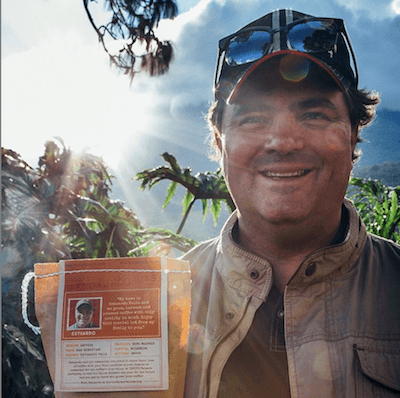

Specialty coffee retailers are a dime a dozen, but Thrive Farmers coffee has managed to stand out from the crowd, both in terms of the quality of the brew and its relationship with the farmers in its network.
Serving up cups of coffee to the attendees of last week's Sustainable Brands conference, Thrive's founder and chief sustainability officer, Ken Lander, was quick to describe what makes his company different from all the other triple-bottom-line coffee purveyors.
"We go straight to the economic," he explained, describing his company's business model of giving as much as 75 percent of revenues directly to the farmer. Lander should know how much of a difference this business model makes -- he's an ex-lawyer turned Costa Rican coffee farmer. He is just one of dozens of farmers that sell their wares through Thrive.
Thrive is already moving millions of pounds of coffee from farmers in Costa Rica, Guatemala, Brazil, El Salvador, Panama and Burundi, enough to shift the spot price for coffee beans.
While Thrive sells directly to consumers, its main goal is corporate partnerships with their much higher volume. The company's first partnership may surprise TriplePundit readers familiar with the firm's stance on gay marriage. Chick-fil-A might oppose gay rights, but that doesn't mean it doesn't see the value in a good cup of coffee. Indeed, the famous chicken restaurant has a history of environmental stewardship and, eager to reboot its coffee, saw Thrive as a great opportunity to "do some social good without paying more," as Bart Newman, vice president of national accounts, puts it.
The partnership has been very successful for Chick-fil-A, earning it the designation as No. 1 in fast-casual coffee, according to Thrillist.
As readers who are familiar with the fair trade model will likely already understand, coffee is a commodity, and the average farmer out there earns only a small fraction of the money you spend when you buy a bag of beans or a cup of joe. Numerous models like fair trade offer protections to farmers in the form of a guaranteed minimum payment or a premium for the co-op, which can be used to fund local schools and hospitals.
Thrive takes things one step further. "Not that fair trade is bad," clarifies Newman, "but we wanted to take a step further. We wanted to make farmers a true partner."
Farmers earn when Thrive earns. It's a startlingly simple model, and one that has been very successful for both the coffee startup and its farmers. The farmers involved generally sell 30 to 40 percent of their supply through Thrive, meaning that they aren't dependent on a single buyer for all their crops, which could be a risky situation. Nevertheless, farmers are clamoring for bigger purchase orders. A group of would-be partners from Honduras was actually monitoring Thrive's social media accounts during the conference, hoping to catch wind of a deal being brewed. "They are hoping that we’ll close a deal so they can come online!" Lander exclaimed.
Thrive's coffee is "specialty grade ... objectively one of the highest quality cups of coffee you can buy," Newman said. The specialty grade is awarded to only 10 percent of beans sold worldwide. Since people are obviously more willing to pay for high quality, Thrive is able to keep its price point on the higher end for coffee ($11.99 per 12 ounce bag) while delivering a quality product to customers and a good price to farmers.
When asked about the worker protections that accompany most Fair Trade programs, Newman alluded to the fact that Thrive knows each farmer, and has seen anecdotal evidence that the money flowing to farmers is having a benefit, like new schools and hospitals, for entire communities. With that said, he acknowledged that certification may be a good choice as the company grows. In the meantime, transparency throughout the supply chain is a great intermediary.
It's hard to argue with Newman's example: "Most of the time, coffee buyers don't want the farmers to know how much their beans are being sold for. We brought the CEO of Chick-fil-A to Costa Rica to introduce him to his farmers."
Image credit: Thrive coffee